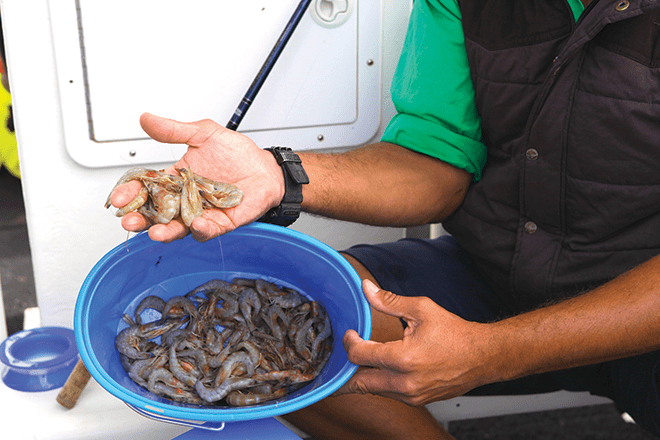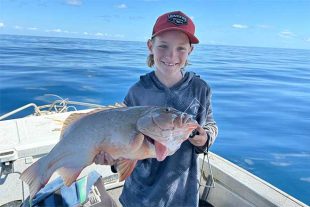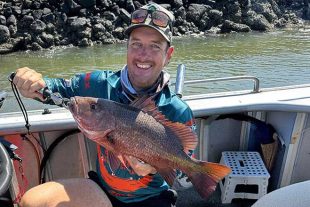WHITE spot disease is a highly contagious viral infection that affects crustaceans such as prawns, crabs and yabbies.
It was first discovered on prawn farms in southeast Queensland in December 2016, causing the largest response to an aquatic disease in Queensland’s history. When found in high-intensity production areas such as prawn farms, white spot results in the rapid mortality of prawns. This can have a devastating effect on our aquaculture industry, as prawn farming is an important and valuable sector for Queensland. In the 2015-16 financial year, for example, there was an estimated 4300 tonnes of prawns produced in Queensland, representing a value of about $80.5 million and employing around 295 full-time staff.
Since its detection on prawn farms, the causative agent for white spot syndrome virus has also been found in a number of wild crustaceans in the Moreton Bay area, prompting movement restrictions to be put in place. This means that raw prawns, yabbies and marine worms cannot be removed from the movement restricted area.
The restricted area extends from Caloundra to the NSW border, following a line 100m off the eastern coasts of Bribie, Moreton and Stradbroke islands. These restrictions are in place to reduce the likelihood of the disease spreading through human-assisted movement.
Surveillance for white spot has been conducted outside the restricted area, along the east coast of Queensland up to Cairns, to see whether the white spot virus has spread further north.
However, to date, all prawns that have been tested in these areas have returned negative results for the white spot virus, which is a great result. In order for Queensland to regain an internationally recognised white-spot-free status, and to lift movement restrictions, surveillance must continue within the restricted area for a minimum of two years, during which time all samples must return negative results.
In a bid to eradicate white spot disease from southeast Queensland, the Queensland Government has committed more than $15 million and is intending to commit further funding over the next two years. This will assist those affected prawn farms in returning to operation and will help Queensland to once again regain a white-spot-free status.
It is not yet known how the white spot virus was introduced into Queensland, however to ensure the ongoing health of our extraordinary marine habitat and protect our local industries, it is important that fishers only use Australian wild-caught prawns as bait. Imported, raw prawns, especially those bought from the supermarket, should not be used as they may carry unwanted diseases, which could then be introduced into Australian waterways.
As we have seen with white spot, these diseases can have devastating consequences. To help stop the spread of white spot, there are a number of things you can do. First, make sure you don’t move raw prawns, yabbies or marine worms out of the white spot restricted area.
Heavy penalties may apply if you do so.
If going fishing, check your bait to ensure it is Australian wild-caught from a quality bait supplier and not from the supermarket. Prawns bought from the supermarket are for human consumption and should not be used as bait. Make sure you put all unwanted bait and seafood in the bin and not into natural waterways, as imported crustaceans such as prawns could carry diseases.
Finally, have a go at catching your own bait; that way you know where it comes from and that the fish already love it. If you buy or catch prawns or crustaceans that you think may have white spot disease, remember to report it immediately by contacting Biosecurity Queensland on 13 25 23 or filling out an online reporting form at daf.qld.gov.au/wsd
On the Department of Agriculture and Fisheries website you can also find out more information about white spot and view a map of the movement restricted area.
 Bush ‘n Beach Fishing Magazine Location reports & tips for fishing, boating, camping, kayaking, 4WDing in Queensland and Northern NSW
Bush ‘n Beach Fishing Magazine Location reports & tips for fishing, boating, camping, kayaking, 4WDing in Queensland and Northern NSW









